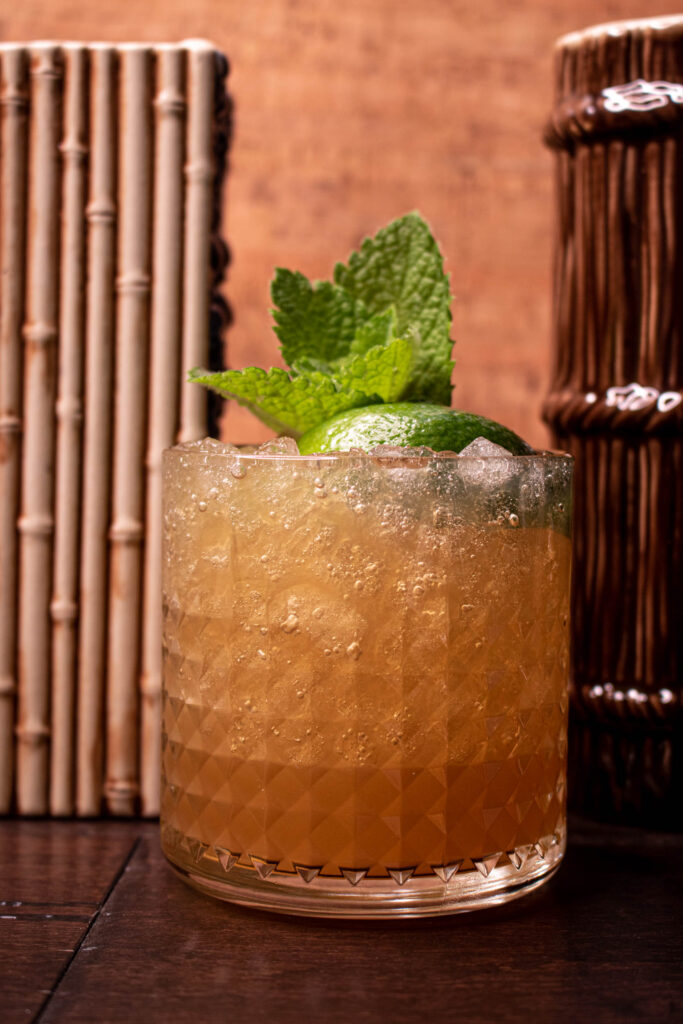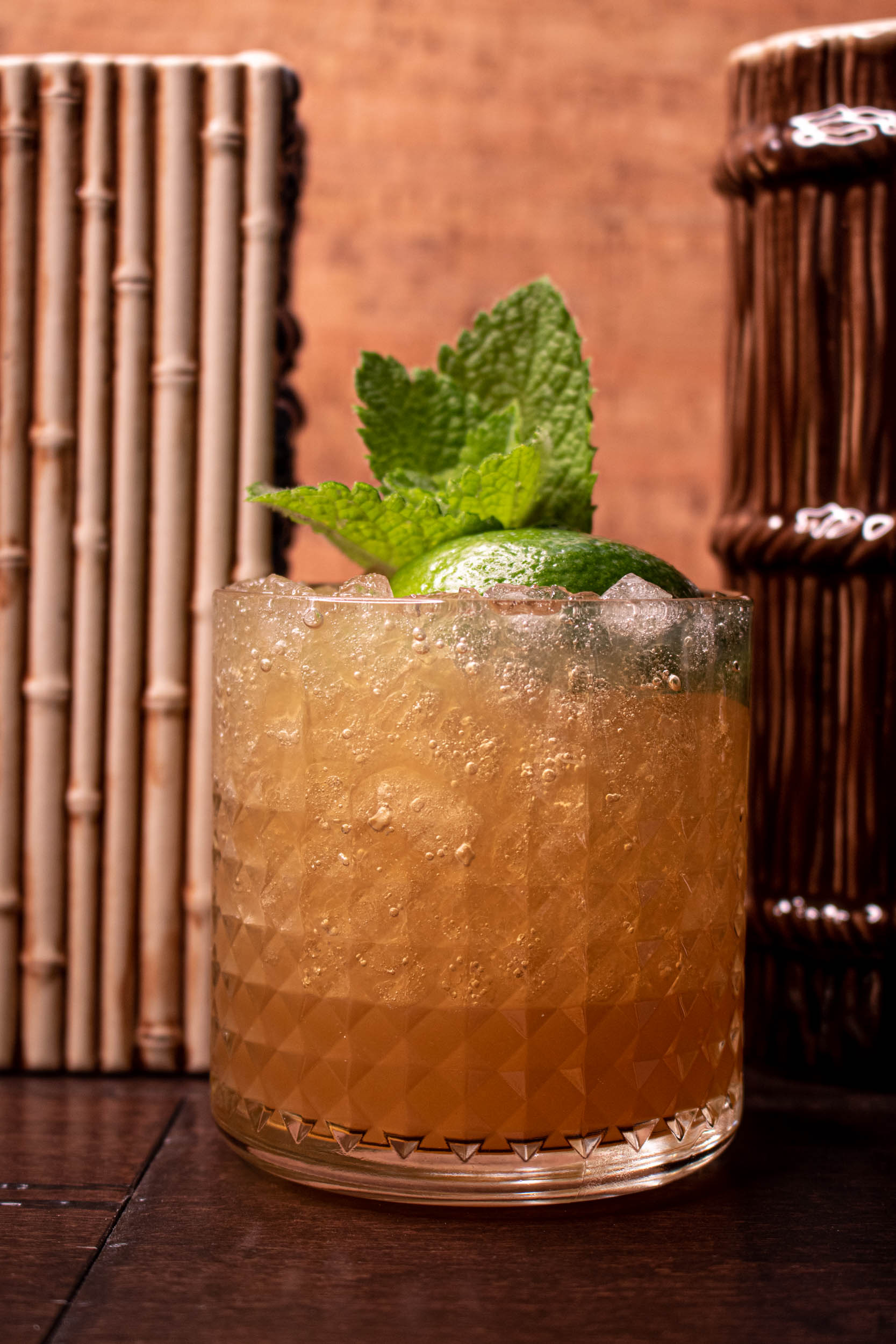
Let’s get something out of the way to start, the Mai Tai’s history and composition are complicated. If you look at the notes for the Mai Tai in Martin Cate’s seminal book, Smuggler’s Cove*, they span over three full pages. Just on one cocktail! The reasons are plentiful (and the full books is worth buying if you’re serious about Tiki drinks), but the long and short of it gets to two essential issues that hamstring Mai Tais:
- The definition of a Mai Tai (from a government standpoint) is inadequate. Combined with a lack of knowledge or care, this has lead to a raft of bastardized cocktails that are essentially a bunch of rum with whatever juices are around.
- The original rum for the Mai Tai (Wray & Nephew 17) was discontinued or in short supply, so it was replaced with Wray & Nephew 15. This replacement resulted in another replacement when the 15 was discontinued. After that, a Martinique rhum was called for, but the style of Martinique rhum at the time wasn’t explanative of how the drink turned out, and resulted in a whole sale change of the character of the drink.
So, without further ado, here’s how to make a Mai Tai!
Mai Tai

The Mai Tai is bright, smooth, and features it’s rum with a straightforward poise. The slight Jamaican funk and tropical fruit notes come together with a slight nuttiness and brown sugar. The lime gives it a wonderful pop of brightness. There is a hint of sweetness, but it’s balanced out with the brightness and finishes slightly drier.
Drink Notes & Recommendations
The Mai Tai is subject to a number of variations due to the shifting of the foundational ingredients that underpinned it. As a result, recipes that call for Jamaican rums are the most original, and Martinique rhums are the evolution of this. The most important element is the rum, which will primarily decide the character of the finished cocktail.
- Rum – In this cocktail we used Appleton Estate Reserve, a Jamaican rum, which gave it a distinct funk and wonderful caramelized tropical fruit note. There are a lot of variations of Mai Tais, and the rum is going to be the driver. For example, to get a grassier more citrus forward Mai Tai, you can use a rhum agricole like Rhum J.M. Although not canon, you can also use a Barbados rum like Doorly’s X.O for a more spice forward variant. As previously mentioned, you can also split the rum between Jamaican rums and rhum agricoles for a new, more complex experience.
- Curacao – We used Pierre Ferrand Dry Curacao here, but many variations call for regular curacao like Cointreau. Normal curacao is going to add a bit more sweetness, while dry curacao will add more complexity.
- Demerara Syrup – You could use regular simple syrup, but we recommend you go with demerara here. It’ll add more depth of flavor, and you can use it in other tiki drinks.
- To Make: Combine 2 parts Demerara Sugar to 1 part water and bring to a simmer stirring over high heat. Remove from heat once the sugar has completely dissolved. Allow to cool and bottle. Refrigerate. The high sugar content will work to inhibit bacterial growth for an extended duration – throw out if any clouding or mold develop.
- Orgeat – Earlier this year we tried everything from Fee Brothers to Small Hand Foods orgeats when making Cameron’s Kick and found a surprising amount of variation. We can – with some confidence, inform you that you should completely avoid Fee Brothers Orgeat here. It’s artificial tasting, and rather unpleasant. The best in our testing were Ferrera Orgeat and Small Hand Foods. While Small Hand is more expensive, there’s a true nuttiness here (although it is more subtle). Ferrara also includes real almonds, but has a slightly cherry like artificial note that flirts around the edges. However, you get more Ferrera (almost triple) for about half the cost of Small Hands. In our Mai Tai, we used Small Hands Foods.
- Lime Juice – For best results, use fresh squeezed
What About the Float?
You might have seen a Mai Tai with a float of rum. This wasn’t the original style, but had become popular as the Mai Tai evolved and the rums changed. While this isn’t part of the original drink, some drinkers still enjoy it, and it can be added. Occasionally, this is referred to as “Old Style”. Referencing the customers, not the drink.
*- This post contains affiliate links that may result in some minor amount of compensation to First Pour Cocktails. We run this site at a loss, so really, you’re helping to keep our server slightly paid – we’re not buying fancy pants yachts and sports cars, just more booze to help you make informed decisions.